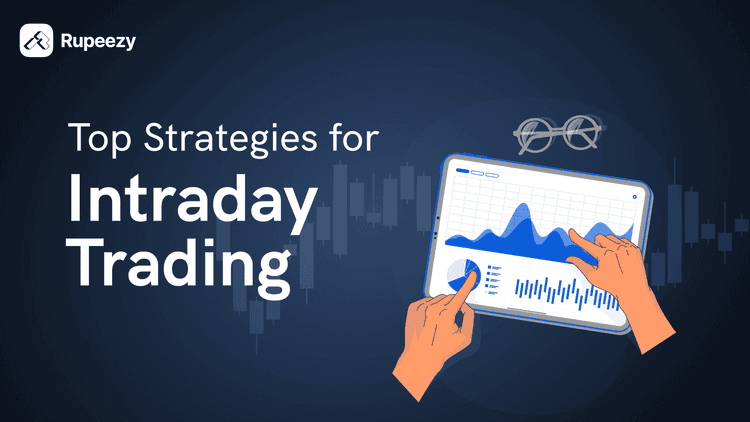Understand Margin in Forex Trading: How it Works and Examples


00:00 / 00:00
Foreign exchange trading is globally one of the most widely traded financial markets with highest liquidity. Forex trading has gained popularity in India with the advent of online platforms. Did you know you could use margin in forex trading as well? Margin in forex trading works similar to the concept of margin in securities or derivatives. In this blog, we will discuss the concept of margin and how you can benefit from forex trading margin.
What is Margin in Forex?
In forex markets, one currency is traded against the other. Due to constant movement in currency prices, the market is highly speculative and gives opportunities for earning speculative gains.
Trades are placed on currency pairs by predicting the future movement of one currency against the other. You can enhance your profit potential by using margin trading. Basically you place a small amount as margin and broker funds the remaining amount on credit.
The amount you can borrow depends on the brokers’ terms. Usually it is a multiplier of the margin amount you place upfront. Or you can say, you are required to bring a margin as a percentage of overall trade value. As a borrower, you are liable to pay interest for the borrowed funds utilised for the number of days your position is open.
Margin is categorised as initial margin and maintenance margin.
Initial margin is the minimum amount required before you open a position.
Maintenance margin is required to be maintained at all times in your trading account. It is adjusted as per the market value of your position. Maintenance margin is a risk hedging to cover any losses and maintain funds to cover open position..
In case your portfolio loses value and incurs loss and the margin falls below the required minimum, you receive a margin call from your broker to level up your account by transferring funds or securities or selling part of your holdings.
Initial and maintenance margin requirement is as per SEBI guidelines that all brokers and traders need to adhere to.
In India, currency trading is permitted in following currency pairs: USD/INR, EUR/INR, JPY/INR, GBP/INR, EUR/USD, GBP/USD, and USD/JPY.
Forex trading is done through the NSE, BSE, and the Metropolitan Stock Exchange of India Ltd. Both SEBI and RBI regulate forex trading.
Forex derivatives and futures are traded in lot size of 1000 for EUR, USD and GBP whereas the lot size is 1,00,000 for JPY. The contract value varies depending on the value of base currency.
Forex trading margin is relaxed compared to stock trading margins. The margin varies from 2% to 8% depending on currency being traded.
Examples of forex trading margin
Let’s take the USD INR derivatives contract.
The lot size is 1000 units and currency rate is 82.15
The margin required is say 2%
Total contract value = 82.15 * 1000 = 82150
Margin = 2/100 = .02
Margin required = 1643
Leverage = 82150/1643 = 50
Hence the leverage you have is 50 times. You can enter into a contract with Rs 1643 per contract and trade for 50x value of contracts for Rs 82150.
How does Forex trading margin work in India?
In India, all currency contracts are settled in INR on daily basis. You cannot trade in currencies without margins. SEBI guidelines permit only SEBI approved brokers and exchanges to facilitate forex trading.
How to start forex trading in India?
You can open an account with a registered broker to begin forex trading in few simple steps:
STEP 1 Select a trading platform, check the currencies approved, margin requirements, brokerage
STEP 2 Complete the KYC by submitting documents online.
STEP 3 Once the account is active, your account will receive approval from exchange to trade in currencies.
You need not open a demat account to trade in currencies.
Conclusion
Forex trading is emerging as a popular trading avenue for traders who understand currency markets. Currency trading is done only with margin in India. Margin in forex trading is as per SEBI stipulated norms and standard across brokers. The margin is calculated as a ratio of contract value. Forex margins are higher compared to stock margins.
FAQs
What is margin called in forex?
Margin is called margin ratio in forex as it is calculated as a percentage of total contract value. For example, a 2% margin would mean you are required to place only 2% of contract value and buy more lots of the contract on margin.
How is margin calculated in forex?
In forex trading, margin is calculated by multiplying contract value with margin percentage.
E.g. if USD INR contract value is 82,000, and margin required is 5%,
Margin = 82000*5% = INR 4100
What does zero margin mean in forex?
In forex zero margin can mean two things:
- A trader wants to fund the entire contract value and does not want to take any leverage from broker
- A trader does not want to place any margin and wants to trade with zero funds from his pocket.
Both the scenarios are not permitted in forex trading as per SEBI rules. SEBI requires traders’ commitment to the contract in the form of margin since forex trading is risky and highly speculative. Due to currency movements and disparity, the full contract value can be high and fully self funded trading can be restrictive. Hence trading on margin is permitted within SEBI defined rules.
The content on this blog is for educational purposes only and should not be considered investment advice. While we strive for accuracy, some information may contain errors or delays in updates.
Mentions of stocks or investment products are solely for informational purposes and do not constitute recommendations. Investors should conduct their own research before making any decisions.
Investing in financial markets are subject to market risks, and past performance does not guarantee future results. It is advisable to consult a qualified financial professional, review official documents, and verify information independently before making investment decisions.
Open Rupeezy account now. It is free and 100% secure.
Start Stock InvestmentAll Category









